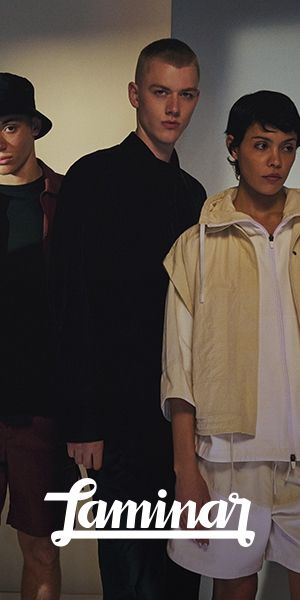
We did a deep dive into the world of hair loss prevention
With Biancamaria Mancini from the Helvetico Sanders Institute

January 29th, 2025
Scalp care is finally on everyone's lips. Niche brands had thought about it before, but 2024 was the year when everyone decided to jump into the fray. Some examples? Dove introduced a new collection dedicated to scalp and hair care, while L'Oréal relaunched its CeraVe anti-dandruff line. Even Beyoncé and Rihanna have launched haircare lines, Cécred and Fenty Hair. Along with scalp care products come those for hair health and... for hair loss and thinning. As often happens, sales followed the trend: according to Circana, sales of hair thinning and hair loss products grew by 34% in 2024 compared to 2023. The hottest innovations? Hair oils and products with fermented ingredients, which rebalance the microbiome.
Consumers Are Interested in Hair Care and Hair Loss Prevention
In the United States, however, as reported by Business of Fashion, industry regulations are not keeping up with this growth, while consumers, on the other hand, are becoming increasingly informed and aware. Among the key topics in this market are relaxing and smoothing products for curly and very curly hair, as well as those designed to slow down hair loss. We focused on this last point by speaking with Dr. Biancamaria Mancini, R&D at Istituto Helvetico Sanders, which has been developing protocols for over 35 years to strengthen hair and stimulate regrowth through innovative technologies. Starting with the basics.
Interview with Biancamaria Mancini on Hair Loss, Causes, Treatments, and the Prevention & Regrowth Market
When we talk about hair loss treatments today, what exactly do we mean?
Many factors contribute to hair loss, including genetics, hormones, the immune system, environmental exposure, medications, nutrition, and lifestyle. Scalp alterations and chronic follicle inflammation are considered effects of these factors. Hair loss also impacts the psychological aspect of aesthetic identity and is increasingly concerning. Pharmacologically, only two molecules have been approved: minoxidil and finasteride. These target the hormonal and androgenetic aspects of baldness, but results are sometimes unsatisfactory due to the multifactorial nature of hair loss. For these reasons, a multidisciplinary and alternative approach to trichology has been developed, incorporating herbal medicine and natural products. Unlike synthetic treatments, natural substances contain multiple active ingredients that work synergistically, providing anti-inflammatory, antimicrobial, and sebum-regulating effects while reducing oxidative stress and stimulating hair growth. Additionally, lifestyle and diet have proven crucial: vitamins and minerals are essential micronutrients, either synthesized by our bodies or obtained through diet and supplements. At Istituto Helvetico Sanders, we have developed a line of supplements that addresses hair health from multiple perspectives. For advanced baldness, the most effective solution remains hair transplantation, where follicles are extracted from the nape (donor area) and implanted in bald areas (recipient zones).
Has there been recent growth or improvements in hair loss treatment technologies? In what way?
The psychological impact of hair loss and increasing consumer awareness have driven scientific research and industry investments into developing cutting-edge solutions. Scientists have deepened their understanding of follicular function, concluding that a multidisciplinary approach is key. At Istituto Helvetico Sanders, we’ve introduced protocols that provide comprehensive guidance, including treatments, hygiene habits, supportive devices, and periodic medical and biological assessments using advanced diagnostic tools to monitor progress. In terms of non-invasive technologies, low-level laser therapy (LLLT) is emerging as a promising method, using laser light to trigger biological responses that stimulate hair growth. Surgically, the traditional FUT (Follicular Unit Transplantation) technique, which left visible scars, evolved into FUE (Follicular Unit Extraction) and further into FUE-DHI (Direct Hair Implantation), eliminating visible scarring and ensuring a more natural result. At Istituto Helvetico Sanders, we now exclusively use FUE-DHI. Additionally, regenerative hair medicine has emerged, including PRP (Platelet-Rich Plasma), mesotherapy, and carboxytherapy—minimally invasive techniques that enhance hair coverage and volume.
Is hair loss only a concern for men, or does it affect women as well?
Hair loss affects both men and women, though it remains more prevalent in men. Pollution, stress, and hormonal imbalances have led to a rise in female cases in recent years. However, thinning manifests differently in men and women, requiring distinct approaches. This is why we advocate for personalized programs that consider each individual's biological characteristics.
More than ever, men are now "allowed" to care for their appearance. Have you noticed this shift?
Men have come to realize that self-care is not just a luxury but a responsibility towards their health and image. More and more men now openly discuss their concerns and seek help. Unlike before, self-care is no longer reserved for those already facing problems—prevention is gaining traction. However, some men still hesitate to seek assistance or require simple, closely monitored solutions. To accommodate these needs, we offer customized protocols and long-term individual follow-ups.
As a result, has there been economic growth in the market for men's hair treatments?
Currently, around 30% of those experiencing mild to moderate hair issues (7.1 million Italians) are interested in starting a trichological treatment for prevention or care. Those most inclined to take action are individuals showing early signs of hair loss (3.6 million Italians). Without a doubt, this is a growing market, both economically and in terms of available services. Scientific research and developing technologies will further fuel this expansion.
What does the future hold for hair loss treatments?
The future lies in prevention and weekly scalp care routines. At Istituto Helvetico Sanders, we’ve developed a scalp routine that maintains hair and scalp health over time. Advanced technology will enable more precise diagnostics and personalized treatments, incorporating epigenetics, inflammation markers, oxidative stress analysis, and regenerative medicine—leading to scar-free hair transplants with natural results.






























































